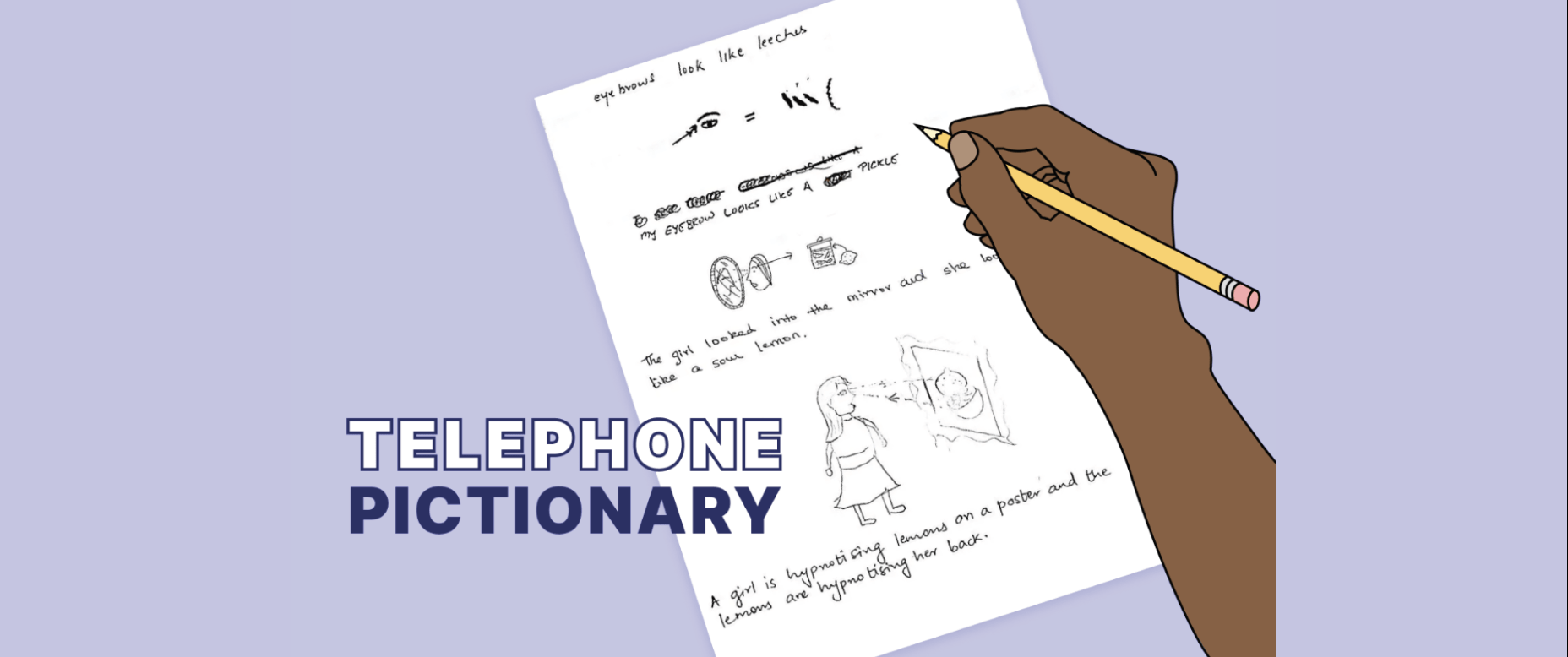This week I played Telephone Pictionary, a public domain game with no credited creator, in a group of five people. We set up the game by simply distributing pieces of paper and markers to each player and proceeded to play 3 separate rounds in this fashion.
This game has extremely similar mechanics to our own game: it involves prompt generation (each player has to come up with an initial sentence to begin the game) and guessing the caption of an image (each player has to attempt to guess what phrase inspired the drawing that they are looking at). The play style is different, however, in that Telephone Pictionary lacks a competitive element whatsoever, whereas our game is a team competition. As a result, there is no real objective for Telephone Pictionary other than to have fun and make your friends laugh, as ridiculously incorrect captions are often more celebrated than accurate ones.
Why It’s Fun
This game relies massively on fellowship for its type of fun, as it’s entirely focused on the social framework of the group. Prompts are often based on inside jokes or shared memories, and therefore the more personal the prompts, the more fun the game becomes. The game can also be played with players who are less close, however, and in that case, it relies heavily on expression for its type of fun, as all players are required to add their individual contributions to each final photo/caption series. It allows players to feel like they’ve left their mark on each paper at the end of each round. These are the same exact types of fun that our game relies on, making this game a direct competitor.
Telephone Pictionary is not only obviously quite similar to Pictionary, but also to other charades-inspired guessing games. What differentiates it from these other games, however, is the way in which each round allows each player to build off of each others’ work. This can serve to almost add a narrative-style of fun to the different series of photos & captions that are created. However, because Telephone Pictionary is so similar to these other freeform games, it also suffers (as they do) from a lack of abuse prevention. Since each player has full control over the image they decide to draw or the caption they decide to write, they have the power to create something offensive or harmful. As a result, the only abuse prevention in place is the social norms that the group playing has set up with each other.
How It Could Be Improved
Because this game is simply a paper-and-pencil drawing game, there are no physical design choices to comment on. However, if this game was to be packaged and distributed in stores, there are some key decisions that could be made to greatly improve gameplay. First and foremost, I noticed after playing one round of the game with only blue pens that the game could be more fun if each player used a different color writing utensil. I believed that this would increase levels of expression style fun, as each player would be able to more easily identify who was responsible for each contribution. Another notable observation from my experience was that every website online recommended playing by simply folding a piece of paper over and over. Playing in this fashion led to a few accidental peeking/spoilers, and as a result, I believe pre-made little booklets could create a more seamless and painless experience. Overall, however, my biggest takeaway from playing this game with my friends was that the initial prompts that were related to our lives rather than something abstract and silly (like “Teletubbies fighting each other”) ended up creating much more engaging and entertaining gameplay. When you look up the rules for Telephone Pictionary online, the first website that comes up says to simply “have each person write down a funny or interesting phrase”. I believe the game would be more fun due to fellowship if this instruction was changed so that it recommended that players write down something funny but personal to the group.



